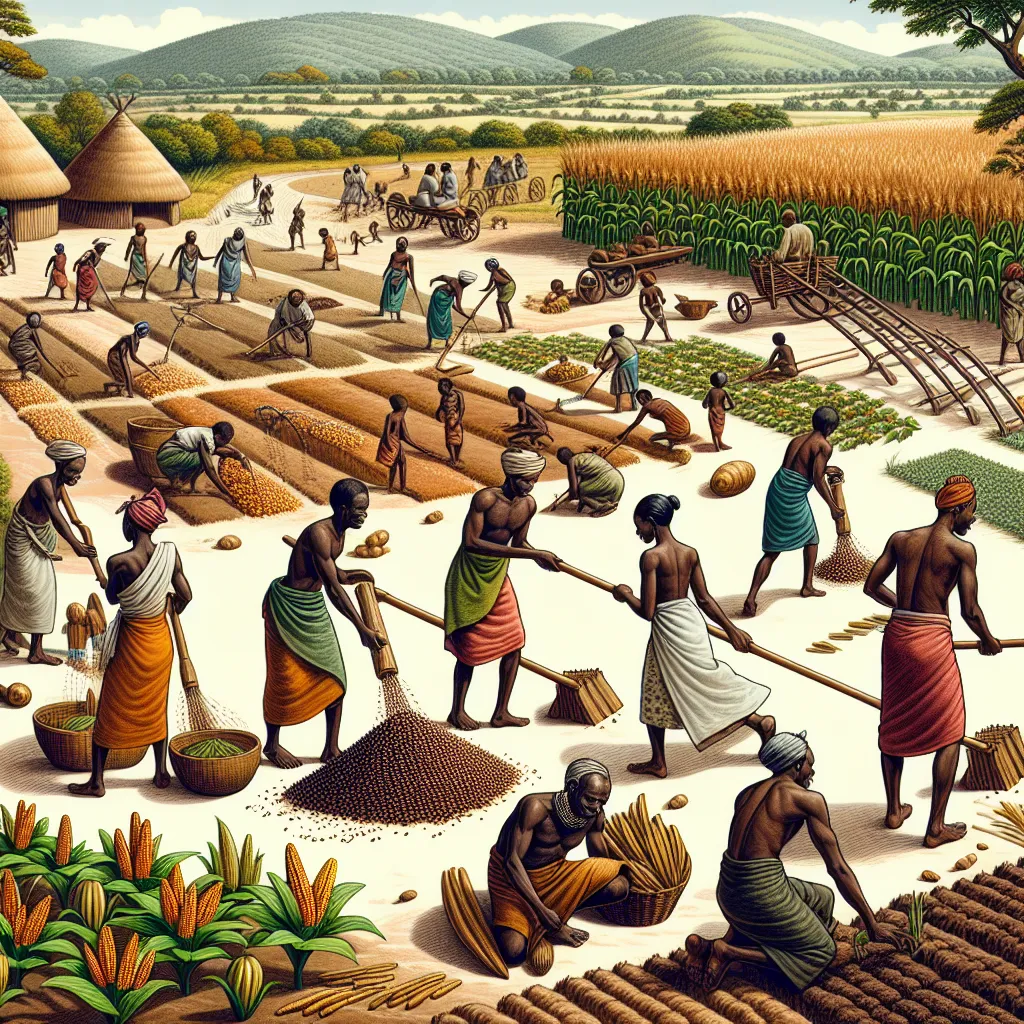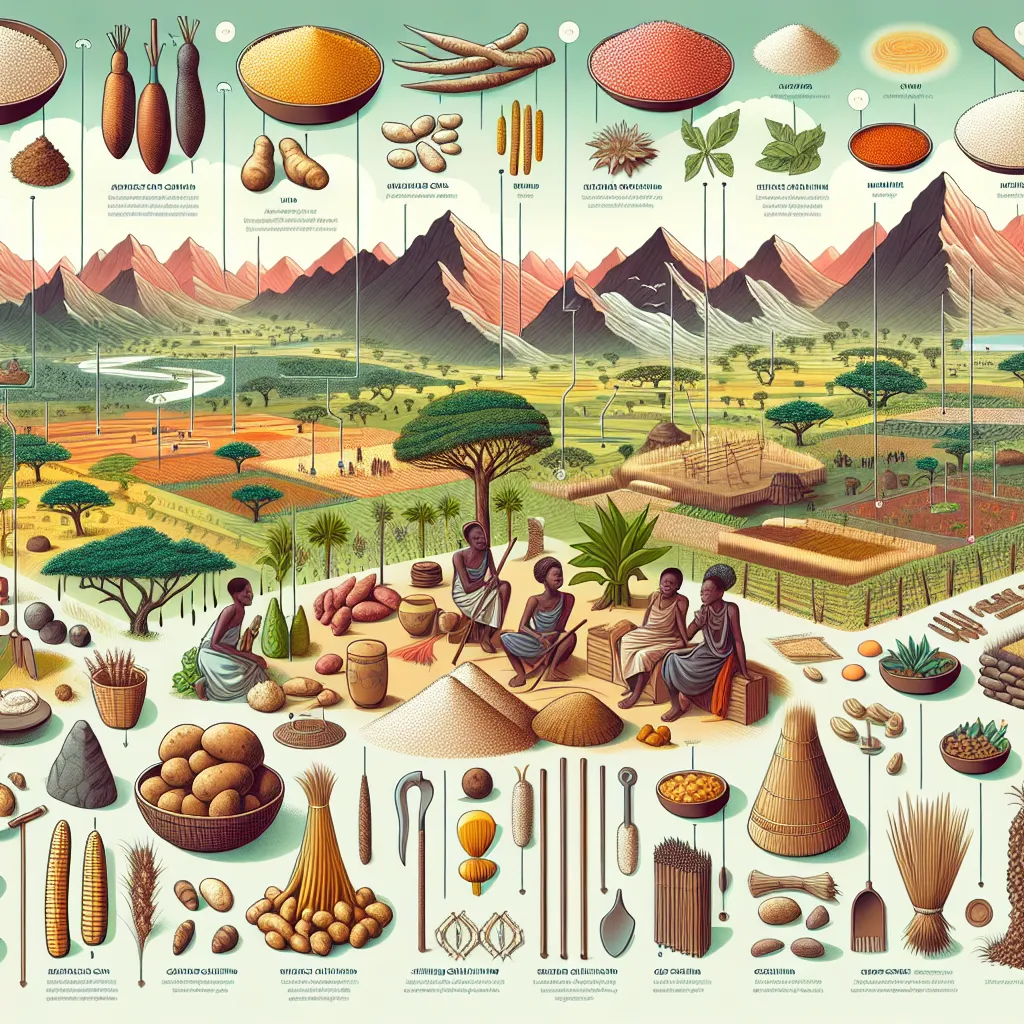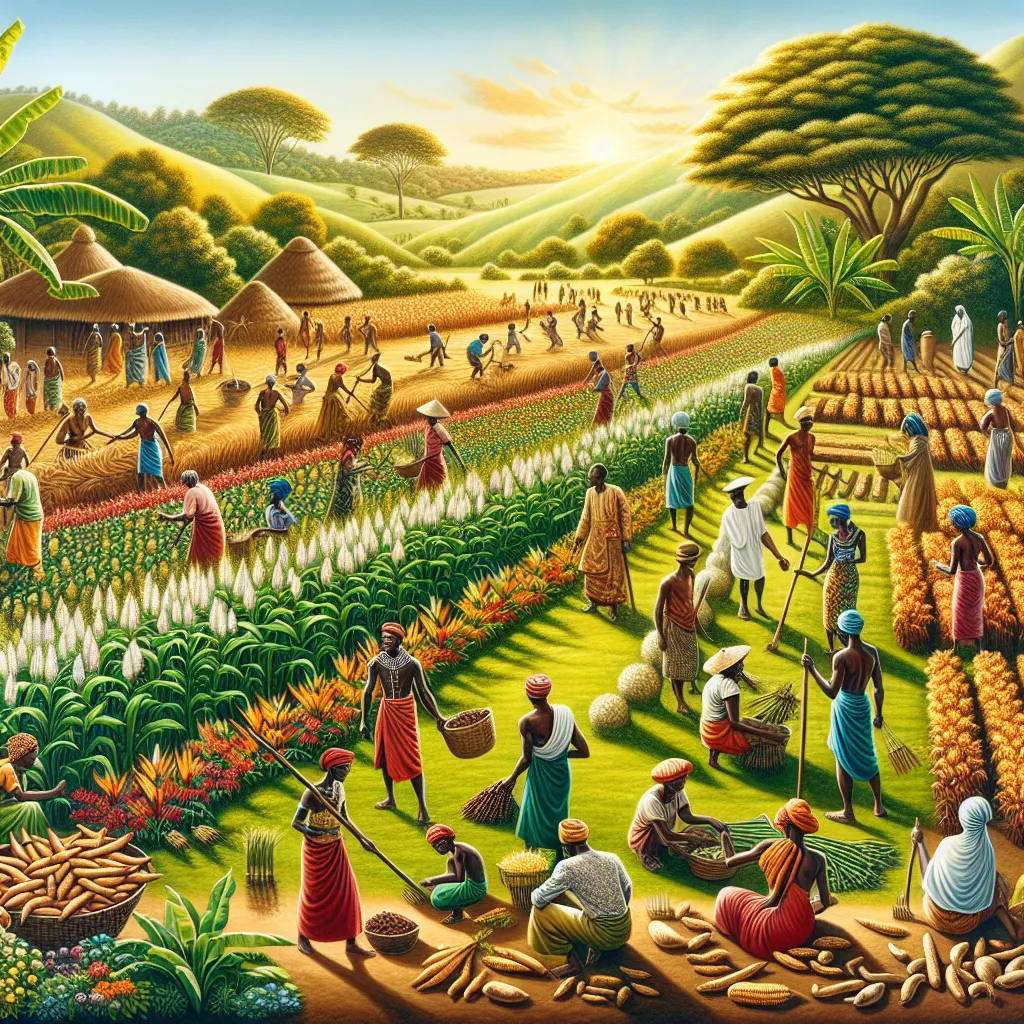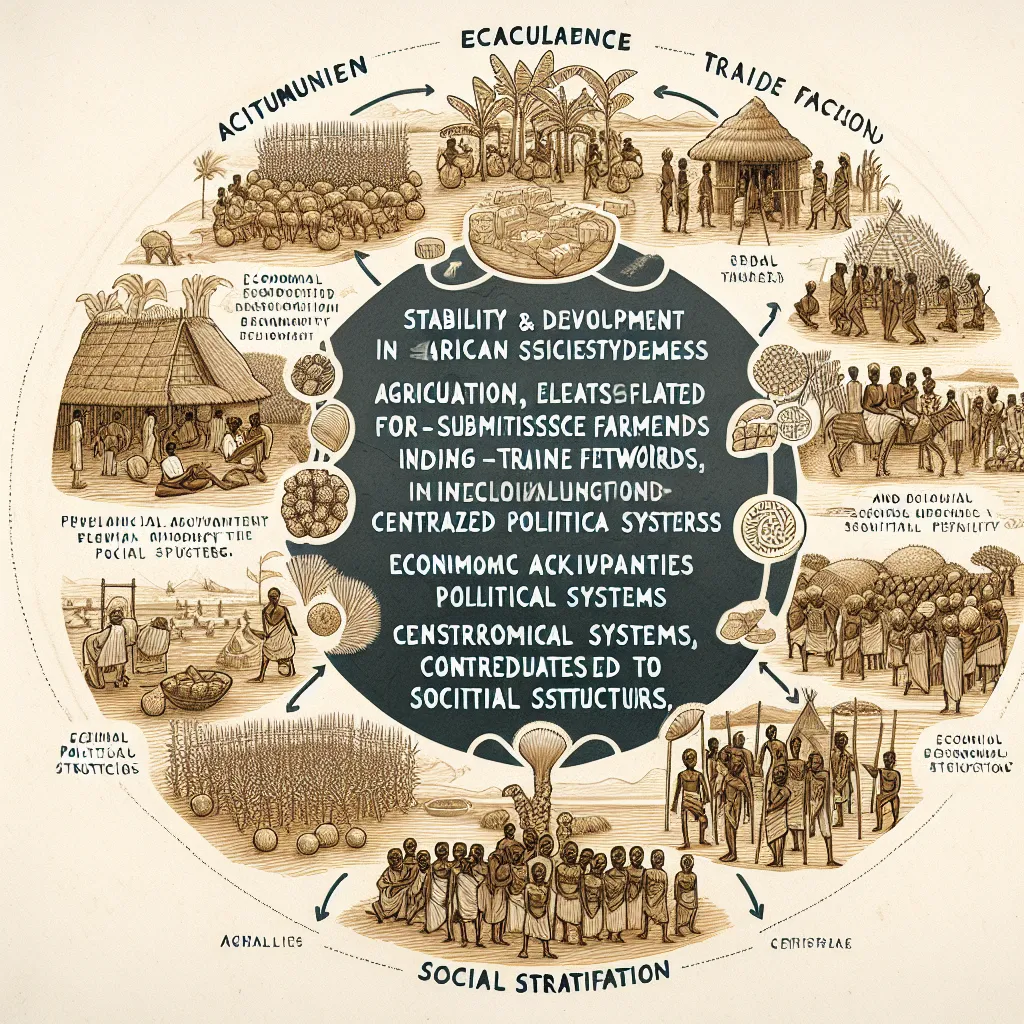Ask AI on The Internet
Question: essay examining agriculture as one of the economic systems of pre-colonial African societies, and discuss how they contributed to the overall stability and development of these societies, it must have citations and references.
**Examining Agriculture as an Economic System in Pre-Colonial African Societies** Pre-colonial African societies were predominantly agrarian, with agriculture playing a central role in their economic systems. The diverse ecological zones across the continent fostered a variety of agricultural practices, which significantly contributed to the overall stability and development of these societies. This essay explores the importance of agriculture in pre-colonial African economies, examining specific practices and their impacts on social structure, economy, and development. **Agricultural Practices and Techniques** Pre-colonial African societies developed sophisticated agricultural practices adapted to their diverse environments. Techniques such as crop rotation, intercropping, and the use of organic fertilizers were prevalent. For example, in the West African savannas, the Hausa and Yoruba peoples practiced mixed farming, combining crop cultivation with livestock rearing. This not only enhanced soil fertility but also ensured a steady supply of both plant and animal products (Raynaut, 1997). Moreover, terracing and irrigation systems in the Ethiopian Highlands supported intensive farming in otherwise challenging terrains, showcasing ingenuity in land use (McCann, 1999). In contrast, the Great Lakes region saw the adoption of banana-based agriculture, which supported dense populations due to the crop's high caloric output (Schoenbrun, 1993). **Economic Stability and Development** Agriculture was pivotal in generating surplus, which facilitated trade both within and beyond African borders. Markets sprang up near fertile agricultural regions, becoming hubs of economic activity and cultural exchange. In the Sahel region, cities like Timbuktu and Gao thrived due to their connection to the trans-Saharan trade, where agricultural products such as millet, sorghum, and rice were traded for salt, textiles, and other goods (Hunwick, 1999). The surplus from agriculture also supported state formation and the maintenance of social hierarchies. In the Kingdom of Buganda, surplus agricultural production enabled the elite to extract tributes, consolidating their power and organizing labor for public works and military campaigns (Reid, 2002). Similarly, the Kingdom of Zimbabwe prospered from the cultivation of staple crops and cattle herding, which formed the backbone of its economy, supporting the construction of the impressive stone structures of Great Zimbabwe (Beach, 1980). **Social and Cultural Contributions** Agriculture also played a crucial role in the social and cultural fabric of pre-colonial African societies. Agricultural festivals and rituals were integral to community life, reinforcing social cohesion and cultural identity. For instance, the Yam Festival among the Igbo people of Nigeria was a significant event, marking the seasonal cycle and celebrating community achievements (Isichei, 1976). Communal labor systems, such as the "ekub" of Eritrea and "nao" in Madagascar, exemplified cooperative practices that strengthened community bonds and ensured equitable distribution of resources (Pankhurst, 1996). These systems provided social security, particularly in times of hardship, and ensured that agricultural production remained sustainable and efficient. **Conclusion** Agriculture was not merely a means of subsistence in pre-colonial African societies but a cornerstone of economic stability, development, and social cohesion. Through innovative agricultural practices adapted to diverse environments, the generation of surplus that facilitated trade, and the reinforcement of social structures and cultural identities, agriculture significantly contributed to the prosperity of pre-colonial African societies. Understanding these contributions offers valuable insights into the resilience and ingenuity of African societies in the face of environmental and social challenges. **References** Beach, D. N. (1980). *The Shona and Zimbabwe, 900-1850: An Outline of Shona History*. Heinemann. Hunwick, J. O. (1999). *Timbuktu and the Songhay Empire: Al-Sa’dī’s Ta’rīkh al-Sūdān down to 1613 and other Contemporary Documents*. Brill. Isichei, E. (1976). *A History of the Igbo People*. Palgrave Macmillan. McCann, J. C. (1999). *Green Land, Brown Land, Black Land: An Environmental History of Africa, 1800-1990*. Heinemann. Pankhurst, R. (1996). *The Ethiopian Borderlands: Essays in Regional History from Ancient Times to the End of the 18th Century*. The Red Sea Press. Raynaut, C. (1997). *Sahel: The End of the Road?*. Zed Books. Reid, R. (2002). *Political Power in Pre-Colonial Buganda: Economy, Society & Warfare in the Nineteenth Century*. James Currey Ltd. Schoenbrun, D. (1993). *Great Lakes Africans: Eastern Pygmy and the Twa Population*. Routledge.
Think your answer is better than the AI's? Post it below.
Question Tags
If you want your question answered by an AI, click here.







Post your own comment: